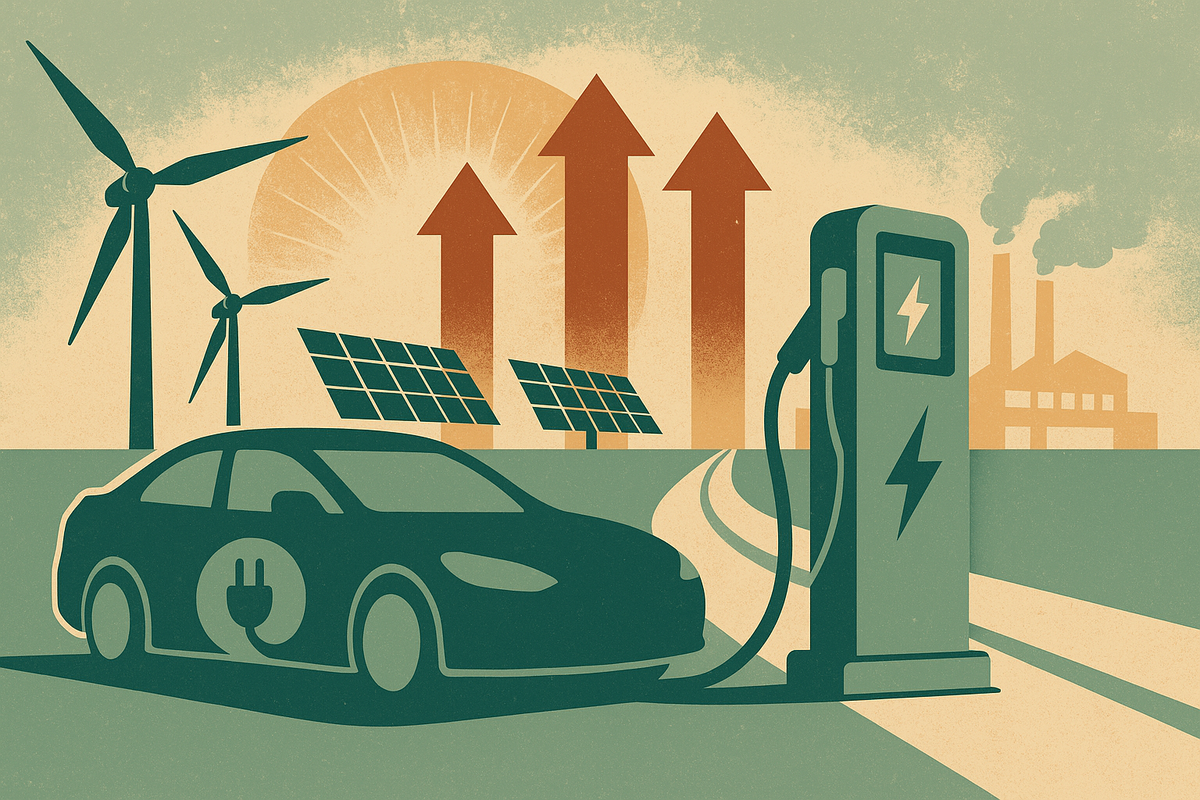The Next Great American Boom: Why Bi-Directional Charging Is the Oil Cracking of the 2020s

In the 1920s, America cracked oil. In the 2020s, we’re about to crack the grid.
A century ago, thermal cracking transformed crude into gasoline, unlocked affordable mobility, and powered one of the greatest economic expansions in human history. Factories scaled. Highways filled. Middle-class wealth exploded.
Today, we’re witnessing an energy breakthrough of equal magnitude: bi-directional wireless EV charging. And once again, its American innovation, not government subsidies leading the charge. This time, the technology isn't built for combustion engines, but for turning electric vehicles into dynamic power assets, stabilizing the grid, slashing battery costs, and reducing reliance on foreign supply chains.
At the center of this transformation is NextNRG Inc. (NXXT), a Miami-based energy-tech firm with exclusive rights to a suite of patents developed at Florida International University. The company isn’t waiting on federal funding, it’s already advancing this technology commercially through partnerships with major fleet operators, warehouse developers, and logistics hubs. The robots, forklifts, and trucks of tomorrow are charging wirelessly today.
If the 1920s gave us Standard Oil and General Electric, the 2020s may give us NextNRG, the new backbone of America’s electrified infrastructure.
The 1920s Redux: Familiar Patterns, Bigger Stakes
The similarities between the 1920s and 2020s are uncanny. Both followed devastating pandemics and were marked by rapid reopenings, surging markets, and bold industrial expansion. Since May 2020, the Dow Jones has mirrored its 1920s trajectory, signaling the start of another generational bull market.
Policy alignment is equally strong. Coolidge’s 1920s playbook, tax cuts, tariffs, deregulation, and energy expansion, matches Trump’s. Back then, it was oil cracking that powered growth. Today, it will be bi-directional wireless charging, which transforms EVs into mobile batteries and turns roads and warehouses into power infrastructure.
Instead of building oil refineries, we’re building smart roads, charging hubs, and grid-connected logistics centers. Just like the 1920s, those who move early on this transformation stand to benefit most from the next great American boom
NextNRG Inc. (NXXT): From Patent to Power Grid
NextNRG holds patented rights to dynamic, wireless, bidirectional charging technology, such as US10637294B2, built for highway-speed recharging, stationary hub applications, and AI-coordinated grid support.
Dynamic in-motion wireless charging enables electric vehicles to receive power while driving at highway speeds up to 75 miles per hour via electromagnetic resonance embedded in specially constructed road lanes. This technology, when implemented across could eliminate "range anxiety," reduce the need for massive onboard battery storage, and allow EVs to operate with batteries as small as 20 kWh, down from today's standard of 50 kWh.
The second core innovation is the PEACE Controller (US10958211)—a sophisticated, AI-powered device that coordinates bidirectional energy flow between EVs, homes, and the grid. This means EVs don’t just consume energy; they can send it back, acting as mobile power sources. With over 100 million EVs expected on the road in the next decade, this system would effectively turn our vehicle fleet into a massive, distributed battery network. It balances grid demand in real time, stores excess renewable energy, and pays drivers for their participation.
This isn’t speculative either, the company is actively deploying this tech in:
- Warehouses, where wireless charging pads power fleets of autonomous robots and forklifts
- Fleet garages and truck stops, where vehicles plug into the grid via wireless connections
- Smart logistics nodes, where static and dynamic systems are used to balance local energy supply and demand
The commercial rollout already underway and should a federal program adopt it, scalability would simply accelerate.
Trump Freedom Bonds
Our $2.1 trillion federal infrastructure plan, detailed here, could play a major role in scaling this project. Should policymakers back our plan, funding could be driven by Freedom Bonds, $250-$300 billion per year for 10 years, backed by modest tolls and grid earnings. With these mechanics, the buildout could remain revenue neutral by 2045.
It’s a modern version of the 1956 Interstate Highway Act, only this time, vehicles power the grid rather than drain it.
America's Numerous Competitive Advantages
The United States holds structural advantages that no other nation can match. Its energy portfolio is unmatched, spanning traditional resources like Texas oil, Appalachian natural gas, and Wyoming coal, alongside record-breaking growth in solar and wind capacity. It is also one of few countries with extensive and sustainable access to freshwater, an often-overlooked resource.
On the demand side, the U.S. is the undisputed global leader, despite making up just 4% of the world’s population, it drives 30% of global consumption and holds a staggering $200 trillion in household net worth.
Moreover, America benefits from geographic and regulatory uniformity. Unlike Europe or Asia, which must navigate fragmented markets and inconsistent regulations, the U.S. operates under a single language, a unified legal system, and interconnected infrastructure across a vast, stable landmass. These factors make national rollout not only feasible, but efficient.
With NextNRG’s dynamic charging system enabling significantly smaller batteries, electric vehicle costs could fall to just $18,000, undermining China’s stranglehold on lithium and battery manufacturing and repositioning the U.S. as the global EV cost leader.
Economic Impact: A Real Roaring Twenties
If executed at scale, the economic effects of NextNRG’s plan could rival the transformative impact of the original automotive revolution. The initiative has the potential to create over four million new jobs across manufacturing, clean energy, logistics, and infrastructure. At the consumer level, it could usher in a period of energy deflation, as electric vehicles earn their owners income by contributing power back to the grid.
From an investment perspective, the opportunity is equally compelling. With a current market capitalization of $330 million, NXXT could see exponential growth, potentially reaching $50 billion by 2030, a return on par with the historic rise of industrial giants during the last century’s infrastructure booms.
This is not simply a bet on new technology. It’s the foundation for an entirely new energy economy—decentralized, commercially driven, and built to scale beyond the U.S. to the rest of the world.
Crack the Grid, Power the Century
A century ago, America cracked oil and built a middle class. Today, NextNRG is cracking the grid, making energy more dynamic, distributed, and democratized. This is the future of mobility, logistics, and power, and it’s already happening.
America has the innovation, the capital, the consumers, and the momentum.
The 2020s aren’t just echoing the past. They’re upgrading it. And this time, the boom ends with resilience, independence, and growth for the next century.
We’re betting on it.
Disclosure: I own shares of NXXT and may buy or sell shares at any time without prior notice. This statement is not a recommendation to buy or sell securities and reflects my personal investment decisions.





